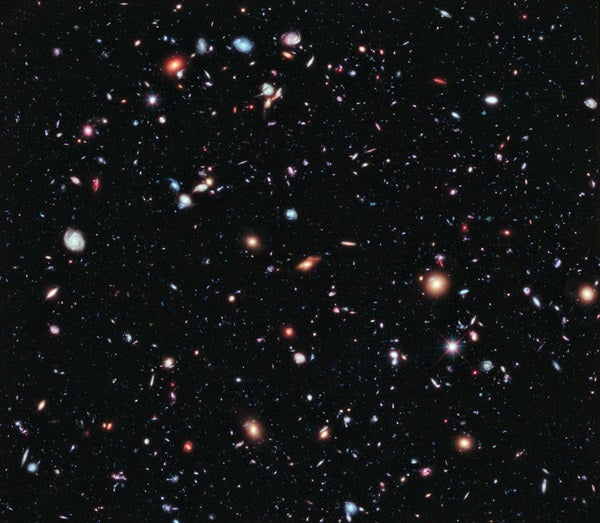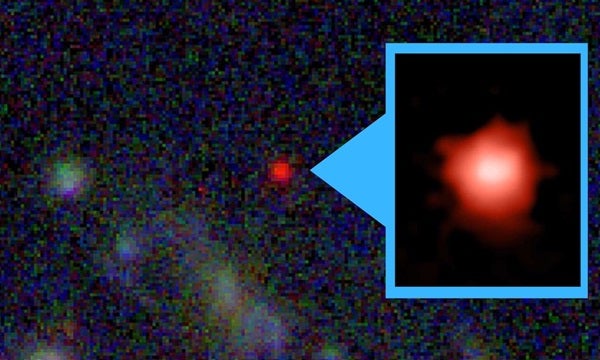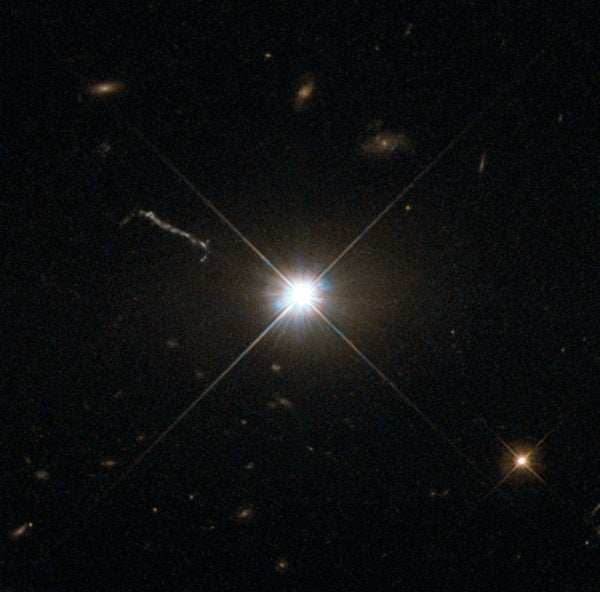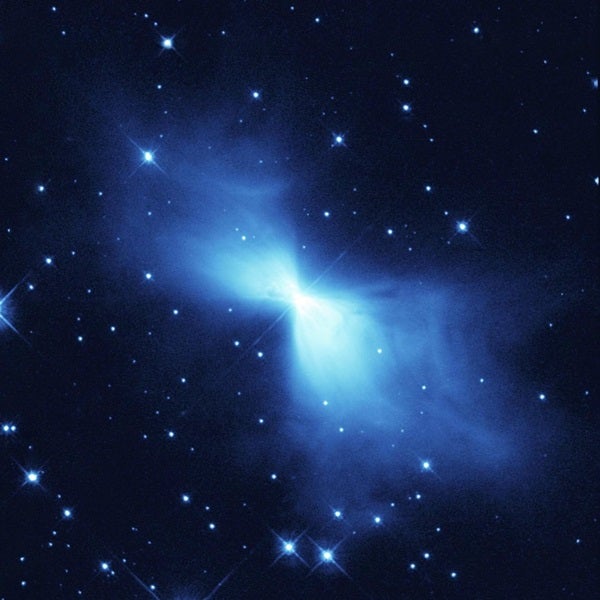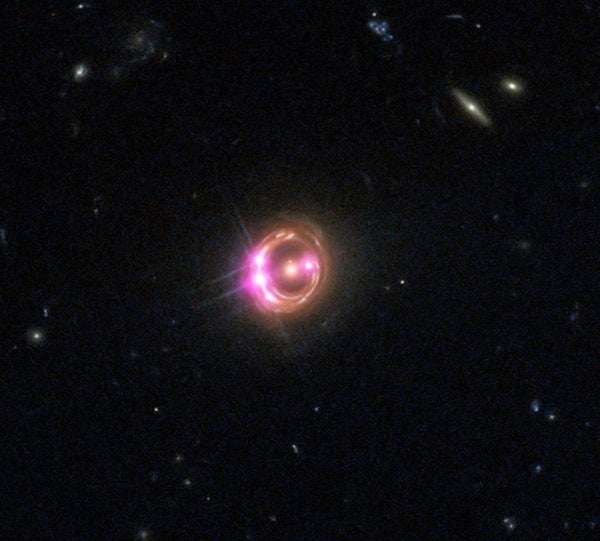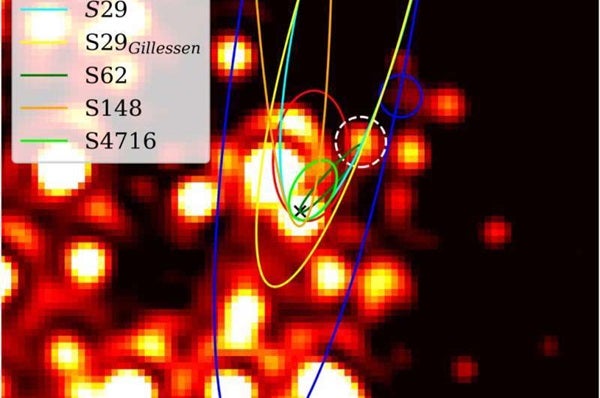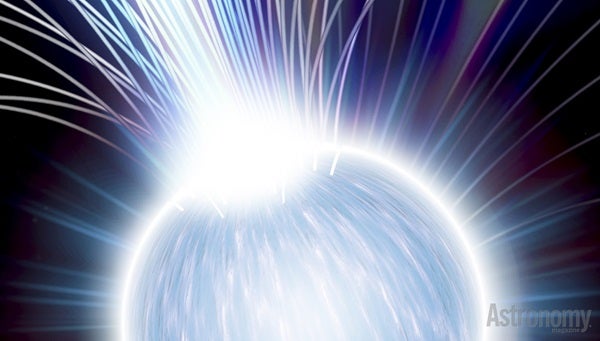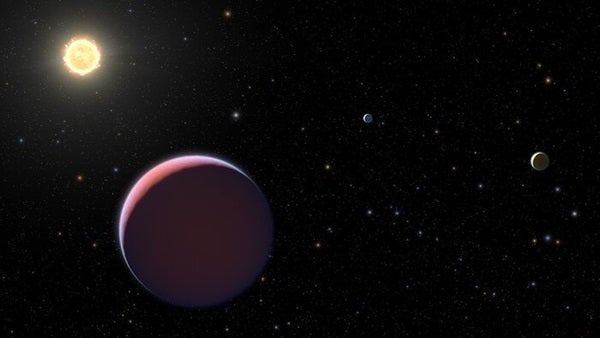The more we learn about the universe, the more we realize how reassuringly mundane our own region of space actually is. We lucked out. Earth resides in a relatively calm and cozy spot. But much of the cosmos is filled with stars, planets, and galaxies with extremely bizarre, and often violent, qualities.
From stars that burn so hot they make the Sun look almost cool in comparison, to planets with the density of cotton candy, to galaxies so old they existed when the universe was still in its infancy, these are some of the most extraordinary cosmic objects known — even if they may not be record-holders for long.
The oldest and most distant galaxy: GLASS-z13
The recently launched James Webb Space Telescope (JWST) is set to play a key role in the future of astronomy. So, it’s only natural to assume some of its discoveries will smash current records.
And sure enough, in its first month of science operations, JWST has exceeded expectations. Thanks to the space telescope’s powerful, gold-plated patchwork of 18 hexagonal mirrors, it can peer farther into the universe — and thus further back in time — than any previous instrument. In fact, JWST might have already helped unseat a previous record-holder for the earliest and most distant galaxy.
In the deep background of one of JWST’s first images was an unassuming red dot. But based on a detailed analysis, this innocuous blob has since proven to be one of the most distant, and thus oldest, galaxies ever seen.
JWST revealed GLASS-z13 as it existed around 13.5 billion years ago, when the universe was no more than 350 million years old. That makes the galaxy roughly 100 million years older than the previous oldest galaxy ever spotted by astronomers, GN-z11.
“GLASS-z13 is one of the first luminous sources that we found at a distance larger than can be observed with the Hubble Space Telescope,” Pascal Oesch, an assistant professor at the University of Geneva who was part of the team that identified GLASS-z13, tells Astronomy. However, he cautions, “We do not know the exact distance yet.”
But of course, thanks to JWST, GLASS-z13’s potentially superlative status is wavering.
“Already now, there have been several candidates published that would be much further back in time than GLASS-13, if confirmed,” Oesch says. “JWST has been built exactly for this purpose, to push our observational horizon to the first galaxies. I expect that many more distant galaxies will be found over the next years.”
The hottest object in space: Quasar 3C273
At the center of many young galaxies reside some of the brightest objects in the universe: Quasars. These extremely luminous objects are powered by a galaxy’s supermassive black hole, more specifically its accretion disk. As this disk of matter swirls around the black hole, friction between the gas and dust emits tremendous heat and light. Quasars release so much energy that they often shine 100 times brighter than all the stars in their galaxy combined.
The first quasar to be conclusively identified, quasar 3C 273, located roughly 2.5 billion light-years from Earth, remains one of the brightest and hottest quasars known. A 2016 study published in The Astrophysics Journal suggested that the temperatures at the heart of this quasar could climb higher than 18 trillion degrees Fahrenheit (10 trillion Celsius).
These temperatures — hundreds of thousands of times hotter than the Sun — are so extreme that they challenge our theoretical understanding of how hot cosmic objects can get. Previous theories have suggested that at temperatures of a few trillion degrees, electrons should shed energy to photons, causing rapid cooling.
The blisteringly hot quasar 3C273 seems to suggest this mechanism isn’t always in effect, though exactly why remains a mystery.
The coldest region of space: The Boomerang Nebula
The Cosmic Microwave Background (CMB) radiation is a ‘fossil’ remnant from an event shortly after the Big Bang, and it fills the universe almost equally. Because of how ubiquitous the CMB is, space rarely drops below a temperature of about –455 F (–270.42 C, or 2.725 Kelvin).
Rarely, but not never.
Located about 5,000 light-years from Earth is a young planetary nebula called the Boomerang Nebula. In 1995, astronomers discovered that this region of space sports a temperature of just 1 K, which is nearly –457 F (–272 C). Absolutely zero, or 0 K, is the hypothetical coldest possible temperature, at which all molecular and atomic activity would cease.
The Boomerang Nebula (which is actually shaped a bit more like a bowtie than a boomerang) is composed of gas being expelled by a dying star at its heart. For the last 1,500 years, the star has been losing one-thousandth of a solar mass per year. And the winds, reaching some 310,000 mph (500,000 km/hr), driving away this gas are believed to be the cause of the nebula’s record-shattering cold temperatures.
Most massive black hole: Ton 618
Believed to lurk at the heart of most large galaxies, supermassive black holes are monstrous in size.
The Milky Way’s supermassive black hole — Sagittarius A* (Sgr A*) — has a sizeable mass of roughly 4.5 million times that of the Sun. However, it comes nowhere close to the mass of the black hole Tonantzintla 618 (Ton 618).
Located some 10.4 billion light-years from Earth, Ton 618 is a radio-loud quasar that is powered by a rapidly feeding black hole with a mass some 66 billion times that of the Sun. And the rate at which this black hole is consuming matter means that it is still growing.
Although Ton 618 currently resides at the top of the list of the most massive black holes, it could lose its record if astronomers ever discover an example of a hypothesized population of black holes called Stupendously LArge Black holeS (SLABS), which are theorized to have masses greater than 100 billion suns.
Fastest orbital period: S4716
While the Milky Way’s black hole, Sgr A*, falls far short of the ‘most massive black hole’ record, the region around our galaxy’s central engine hosts at least one cosmic record-breaker.
The stars that orbit Sgr A* are known as S-stars, and they whip around our black hole at incredible speeds due to Sgr A*’s massive gravitational influence.
One recently discovered S-star – designated S4716 – orbits Sgr A* at a minimum distance of 9.3 billion miles (15 billion km). At just 100 times the distance between the Earth and the Sun, this tight orbit around a supermassive object means S4716 reaches speeds greater than 17.5 million mph (28 million km/hr), or nearly 3 percent the speed of light.
As a result, S4716 completes an orbit around SgrA* in just 4 years, four times as quickly as one of the most famous S-stars, S2.
“S4716 has the shortest orbital period around the supermassive black hole among known fast-moving stars, so-called S-stars,” explains Masaryk University astrophysicist, Michal Zajaček, who was part of a team that discovered the star, to Astronomy. “S4716 has a period of only 4 years, hence relativistic effects and potential dynamical perturbations due to an extended mass can be studied four times faster than in the case of S2.
Zajaček adds that astrophysicists can learn more about the formation of stars located at the heart of galaxies, as well as how these stars can be transported by different mechanisms to such close proximities to the supermassive black hole.
The researcher says that the star’s record is safe — for now: “Currently, no other star is challenging S4716 in terms of the orbital period, however, it is quite likely that such a star will be detected with upcoming 30-meter telescopes that will spot fainter stars.”
Fastest rotating star: PSR J1748−2446ad
While S4716 takes the record for the star with the fastest orbital period, the speed of the this spinning cosmic object leaves that S-star in the dust.
PSR J1748−2446ad is a dead star located some 18,000 light-years from Earth. At its equator, this neutron star’s surface spins at around 157 million mph (250 million km/hr) — that’s nearly 24 percent the speed of light!
Like all neutron stars, PSR J1748−2446ad was formed when a massive star exhausted its nuclear fuel and could no longer support itself against gravitational collapse. Just as a figure skater draws in their arms during a spin to increase their rotation speed, a collapsing star’s shrinking radius revs up its rotational speed.
When the massive star dies, its core shrinks from around the size of the Sun to an object roughly the size of a city. That not only creates a neutron-rich form of matter that’s so dense a mere tablespoon of it would weigh 1 billion tons, but it leaves some neutron stars, like PSR J1748−2446ad, spinning at incredible rates.
Lightest planets: The ‘super-puffs’ of Kepler-51
Super-puffs are worlds that can have masses equivalent to or a little greater than Earth, but they have incredibly low densities due to the fact that their atmospheres balloon out, giving them diameters similar to gas giants like Jupiter.
The super-puffs Kepler-51b, Kepler-51c, and Kepler-51d are the least-dense planets we’ve ever discovered so far, equivalent to Jupiter-sized balls of cotton candy. And this trio is even more remarkable because all the super-puffs orbit the same star: Kepler 51.
“The Kepler-51 system is the only system that hosts more than one so-called super-puff exoplanet,” Jessica Roberts, a researcher at the Pennsylvania State University and the Center for Exoplanets and Habitable Worlds, tells Astronomy. “Super-puffs, in general, are incredibly rare to start with — less than about 20 [are] known — so finding a system that hosts three is extremely special.”
Roberts, who conducted atmospheric research on the Keplar super-puffs, explains that these planets may be so fluffy due to the youth of the Keplar-51 system and the fact that the star itself is still quite active. “Young planets tend to have hotter interiors from recently forming; hotter interiors can puff up an atmosphere and make the planet appear larger,” Roberts says. “Slowly, over time, the Kepler-51 planets will contract as their interiors cool down.”
The planets could also shrink due to the fact their lack of density means they don’t have enough gravitational influence to hang on to their atmosphere. As the closest planet to its star, Kepler-51b is at particular risk of harsh stellar radiation stripping away its atmosphere.
“It may be possible for Kepler-51b to contract and lose enough mass to look similar to other sub-Neptunes in a few billion years,” Roberts says. “This may be why other systems only have one super-puff: Planets closer in could lose their atmospheres early on in their lifetime.”
Records are made to be broken
If the yearly publication of Guinness World Records proves anything, it’s that records are so fascinating because they are meant to be broken.
JWST has already shown that some records — particularly those related to distance — are in serious jeopardy. Telescope technology, in general, is quickly improving, and many cosmic records are now looking shaky.
“JWST has already demonstrated how powerful it can be. However, we are still learning how the instruments are working, and how to calibrate them,” says Oesch. “The large number of luminous galaxy candidates so early in the universe was definitely a surprise. These are very exciting times!”
And, when it comes to spotting the fast-moving stars around Sgr A*, Zajaček is eagerly awaiting another instrument set to begin observations later this decade.
“A real game-changer in this regard will be the Extremely Large Telescope [currently under construction in Chile] with its 39-meter primary mirror, which will detect many fainter stars than currently monitored S-stars,” Zajaček explains. “For sure, some of them will orbit Sgr A* at comparable distances to S4716, or hopefully even closer.”
The recent improvements of exoplanetary detection methods means exoplanet records are particularly vulnerable of displacement, too.
“From an exoplanet perspective, we are continuing to find new and very weird worlds, rogue planets, planets on comet-like orbits, super-puffs, and even hot Jupiters — planets that we would never have imagined existed even a few decades ago,” Roberts says. “As technology and our techniques improve, my guess is that this trend will only continue.
After all, according to Roberts: “The universe seems to be pretty good at forming weird and extreme things.”

